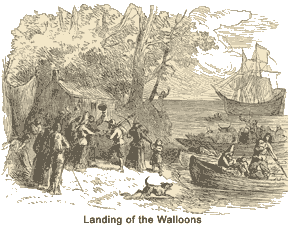The European region known as the Low Countries (present-day Belgium and The Netherlands) was a backwater during much of medieval times. By the 1300s, however, shipbuilding, fishing, and a textile industry had won the area new importance. By the 1400s, a series of dukes of Burgundy had advanced the process of unification and tamed many of the local nobles. Warfare and marriage alliances broadened Burgundian control. In 1516, Duke Charles of Burgundy became king of Spain; three years later he was crowned Holy Roman Emperor as Charles V. A firm link was thus established between powerful Spain and the relatively weak Low Countries. The Protestant Reformation wielded a profound impact on the Low Countries. Lutheranism made significant early inroads, but later was supplanted in many areas by Calvinism. Spanish officials, however, resisted Protestant gains, often by brutal persecution. Resistance developed quickly, especially as fears grew over rumored imposition of the dreaded Spanish Inquisition. Passions were not calmed when Philip II of Spain, an ardent Catholic, inherited the Low Countries in 1555. Revolt erupted in 1568, when nobles united under William of Orange (William the Silent). Spanish forces enjoyed overwhelming superiority on the land, but rebel forces controlled the seas. A memorable event occurred in 1574, when the northern Dutch opened the dikes (protective seawalls) to enable their fleet to sail across flooded farmlands to the defense of besieged Leiden. Southern areas, largely Catholic, returned to the Spanish fold as the Spanish Netherlands. In 1581, the northern provinces declared their independence as The Netherlands or the Dutch Republic. The Spanish would not recognize Dutch independence until the end of the Thirty Years' War in 1648. Dutch Exploration and Colonization The 1600s were a golden era for the Dutch, much as the 1500s had been for the Spanish. The Dutch merchant fleet became the greatest in the world, Amsterdam glittered as a trade center and a Dutch empire was established. This was the age of Rembrandt and Vermeer. Dutch society further distinguished itself by becoming a haven for the oppressed, opening its doors to French Huguenots and Jews from the Iberian Peninsula. The Dutch began to fill a yawning power vacuum in the New World and in Asia. With Spanish strength on the wane following the defeat of the Armada (1588), Dutch "sea beggars" began to prey on poorly defended Spanish and Portuguese possessions. Highlights of the Dutch entrance onto center stage included the following:
 Settlements were started along the Delaware, Connecticut, and Hudson rivers, as well as at the mouth of the Hudson. From the beginning, the outlying ventures were under constant threat of Indian attack and most were abandoned. The focus of Dutch activity centered on the New Netherland and, to a lesser extent, Fort Orange.
Settlements were started along the Delaware, Connecticut, and Hudson rivers, as well as at the mouth of the Hudson. From the beginning, the outlying ventures were under constant threat of Indian attack and most were abandoned. The focus of Dutch activity centered on the New Netherland and, to a lesser extent, Fort Orange.